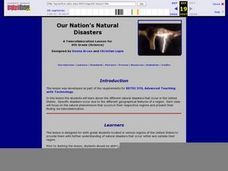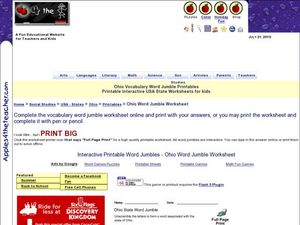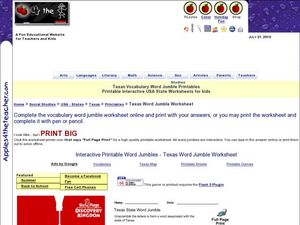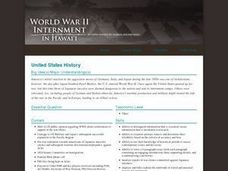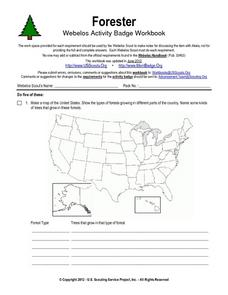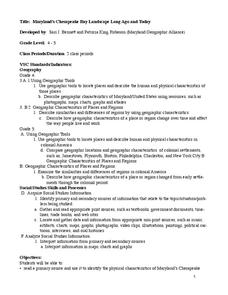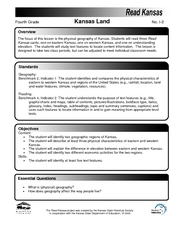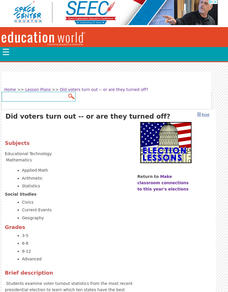Curated OER
Our Nation's Natural Disasters
Sixth graders classify their regions' natural disaster(s). Within this lesson students enhance their research skills by utilizing different resources, as well as their writing skills by composing short research papers.
Curated OER
Mexican Cessation
Eighth graders create a propaganda poster. In this US history lesson students research the various sides during the Mexican-American War. They present their poster and their position for or against the war.
It's About Time
Electricity and Your Community
Young scientists read and interpret a data table about energy generation around the world. Next, they use the Internet to investigate energy generation in their own state, and, finally, pupils read a passage and answer questions about it.
Thoughtful Education Press
Compare and Contrast
Encourage readers to compare and contrast the information that they find in informational text with a variety of reading passages and worksheets. Learners read all about subjects in science, social studies, and literature before...
Cornell University
Insect Anatomy
Young entomologists discover insect anatomy in a very detailed unit plan. Offering background information for teachers about various insects, class members explore the differences between bugs and insects—and yes, there are many...
Curated OER
A Season for Chapters
Art, music, poetry, and the beauty of the seasons is what you'll find in this very nice unit idea. You can use any of the suggested books and activities to engage your second graders in an exploration of the changes that take place...
Curated OER
North Carolina Salt Dough Map Social Studies Project
In this lesson, North Carolina Salt Dough Map, 4th graders create a salt dough map of North Carolina, Students use dough to form the shape of the state of North Carolina. Students label the three regions of North Carolina and all of...
Curated OER
From the Flintstones to the Jetsons
Eighth graders compare and contrast transportation and agricultural methods in the United States from Colonization to Reconstruction. They, in groups, create and present Ohio Memory Scrapbooks to rest of class.
Curated OER
U.S. Archaeological Sites: Geography Practice
In this archaeological sites worksheet, students read about sites in the Unites States and use a map to complete a set of 7 short answer questions.
Curated OER
Ohio Vocabulary Word Jumble
For this Ohio worksheet, learners unscramble the letters in 20 words to spell important cities, people, regions, resources or attractions in Ohio. There is a word bank.
Curated OER
Texas Vocabulary Word Jumble
In this Texas words activity, students unscramble the letters in 20 words to spell key cities, people, attractions and regions pertaining to Texas. There is a word bank.
Curated OER
Temperature Line Graphs
For this temperature worksheet, students create 3 line graphs from data tables showing dates and recorded temperatures. This worksheet includes an answer key.
Curated OER
Worksheet #61 Questions - James Madison
In this James Madison historical term quiz, students define the meaning of several terms relating to the aforementioned topic in order to advance their historical knowledge.
Curated OER
Women in United States History
Students identify and explain the significance of key terms, such as: 19th Amendment, Femisnism, Flappers, Immigration and Jobs in Wisconsin. They identify and analyze viewpoints, events, social classes, and people of various years.
American Chemical Society
Exploring Moisture on the Outside of a Cold Cup
As a stand-alone or as part of the intended unit, this is a valid investigation of what causes condensation to occur. By limiting the amount of air around a cold cup of water and comparing it to one out in the open, they find that the...
Curated OER
World War II: Internment in Hawaii
Students examine world history by writing an essay in class. In this World War II lesson, students identify the attack on Pearl Harbor, the response from the U.S and the effect it had on Japanese-Americans. Students define Japanese...
Curated OER
Forester
In this forester activity, students illustrate a map that shows the types of forests growing in various parts of the country. They also identify six forest trees common to the area where they live and explain how both wildlife and humans...
Curated OER
HIV/AIDS and Contemporary Population Dynamics
Students describe the spread and occurrence of HIV/AIDS at multiple scales.
They explain global and regional variations in the occurrence of HIV/AIDS
and the spread of HIV/AIDS in the United States
Curated OER
In the Footsteps of West Virginia
Students prepare for a visit to the West Virginia State Museum. In this West Virginia history lesson, students research the individuals whose leadership impacted the state. Students create multimedia projects featuring the individuals...
Curated OER
Maryland’s Chesapeake Bay Landscape Long Ago and Today
Combine a fantastic review of primary source analysis with a study of Captain John Smith's influence on the Chesapeake Bay region in the seventeenth century. Your young historians will use images, a primary source excerpt, and maps...
Curated OER
Kansas Land
Fourth graders discover the geographic regions of Kansas. In this geography instructional activity, 4th graders explore the different regions of Kansas and determine how the different geography affects daily life in Kansas.
Curated OER
The Power of Maps & Native American Cultures
Sixth graders discover where and how five Native American cultures lived in North America in what is currently the United States. They examine their way of life and the regions they inhabited. Additionally, 6th graders will understand...
Curated OER
Did Voters Turn Out -- or Are They Turned Off?
What was the voter turnout at your last state election? Examine voter turnout statistics from the most recent election to learn which ten states have the best turnout record. This lesson plan offers election data, handouts, and worksheets.
It's About Time
Petroleum and Your Community
I was going to write a joke about oil, but it seemed crude. This lesson starts with a comparison of where the US gets oil from and how that has changed over time. After analyzing the data, scholars create a graph and use the Internet to...


